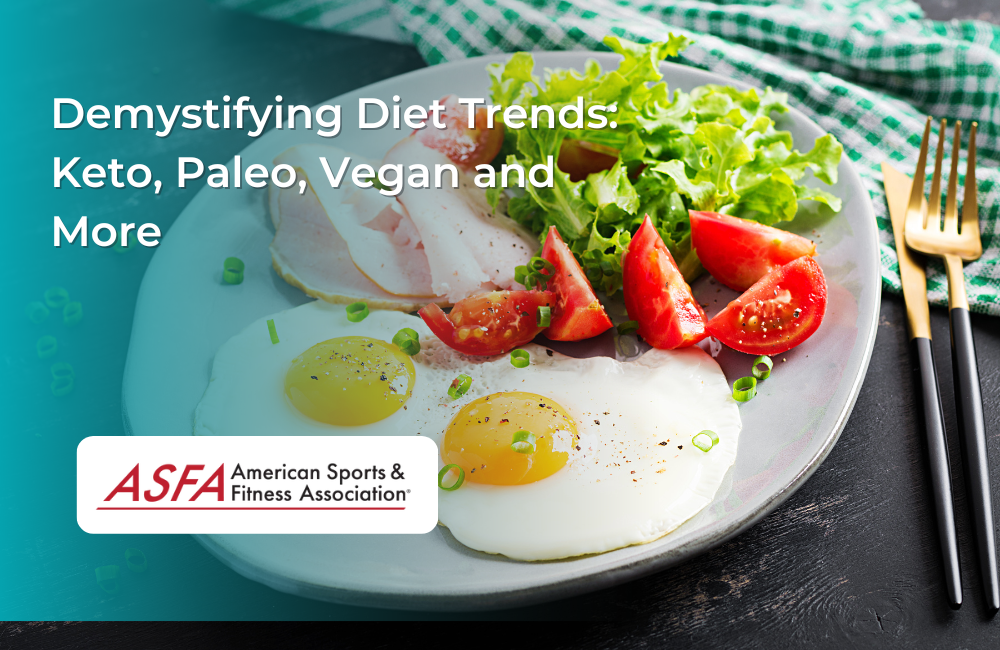The health and nutrition space is always evolving, with new diets and trends popping up all the time. To help you make sense of it all, we’re breaking down some of the most popular diets today so you can decide if they’re right for you.
Keto
The ketogenic diet is a low-carb, high-fat eating plan. It's known as "keto" for short. Keto diets are good for weight loss and can also help with diabetes, epilepsy, and heart disease.
Ketosis is when your body uses fat instead of carbohydrates for energy. When you eat too many carbs or sugars (which turn into glucose), your body produces insulin to break down those foods into usable energy in the form of glycogen--a type of sugar stored in the liver and muscles. But when you have very few carbs available to burn for fuel, your body starts breaking down its own fat stores instead; this process produces chemicals called ketones that are used as fuel instead of glucose/blood sugar levels rise again after eating low-carbohydrate foods like meat poultry fish eggs cheese nuts butter olive oil coconut milk avocado avocados olives leafy greens broccoli cauliflower cabbage spinach kale Brussels sprouts collard greens swiss chard bok choy kombu seaweed kale Romaine lettuce iceberg lettuce eggplant mushrooms onions leeks garlic scallions artichokes okra egg yolks
Paleo
Paleo is a diet that is based on the diet of our ancestors. It's not a vegan or vegetarian diet, but it can easily be modified to become plant-based.
Paleo and Whole30 are very similar; they both emphasize eating whole foods in their natural state (no processed foods). The main difference between them is that Paleo eliminates legumes and dairy products while Whole30 allows for some dairy products such as kefir or ghee (but no other forms of dairy).
Keto is the same as Paleo except it emphasizes a high fat intake instead of focusing on protein like many other diets do. Keto also allows alcohol consumption in moderation--something that doesn't fit into most other healthy eating plans!
Vegan
If you're considering switching to a vegan diet, it's important to be aware of the health benefits and potential risks. A vegan diet excludes all food of animal origin. This means no meat, fish, poultry, or eggs; also no dairy products like milk or cheese (although there are some exceptions).
Vegan diets contain plenty of fruits and vegetables as well as legumes (beans), nuts, and seeds that are rich in vitamins and minerals. Many people who follow this type of eating plan report feeling better than they did before adopting it--they say their energy levels are higher from getting enough nutrients without having too much-saturated fat from animal products in their diets.
Many people choose a vegan lifestyle because they want to reduce their consumption of animal products for ethical reasons such as concern about animal welfare issues or environmental sustainability concerns related to raising livestock for food production purposes
Plant-Based Keto
Plant-based keto is a low-carb diet that emphasizes the consumption of plant foods and healthy fats. It's similar to many other plant-based diets, which focus on whole foods such as fruits and vegetables, nuts, seeds, and oils. In fact, if you've ever tried any of those popular diets like veganism or vegetarianism -- or even just eating more fruits and veggies -- then you're probably already familiar with some of the principles behind plant-based keto.
The main difference between regular diets and plant-based keto is that this version cuts out most animal products (including meat) in favor of more plants and less processed food. If you're looking for something new but still want to stick with your favorite foods like pizza or pasta dishes without feeling deprived of all those delicious carbs (or feeling guilty about eating them), then this might be worth checking out!
Whole30
Whole30 is a 30-day challenge to eat whole, real food and eliminate added sugar, alcohol, grains, legumes, soy, and dairy. It's not a diet but a reset for your health. A plant-based keto is a plant-centric approach to low-carb eating that allows you to reap benefits like increased energy levels and better sleep while still losing weight. Veganism is a way of living that attempts to exclude all forms of animal exploitation and cruelty (whether for food or any other purpose). The Paleo diet is based on eating whole foods that our ancestors would have eaten during the Paleolithic era--before agriculture developed 10 thousand years ago
Takeaway:
Your takeaway is the most important part of any article. It's what people will remember and use as a call to action, so it needs to be catchy and easy to remember.
It should summarize the main points of your article in one or two sentences, with enough detail so that readers know what they're getting into if they choose to read more about your topic. Make sure it's relevant to your target audience too!
As with all content marketing pieces, try using at least two tools of optimization (keywords) when choosing where exactly you want this sentence placed within your piece:
Conclusion
By now, you may be wondering if it's worth it to keep up with all these different diets. The truth is that there's no one-size-fits-all approach to eating. The best thing you can do is experiment with different types of food and see what works best for you. If one type of diet helps reduce your symptoms or improves your health, then great! Keep doing what works! If not, try something else until something does work--and don't give up just because someone tells you their way is better than yours





